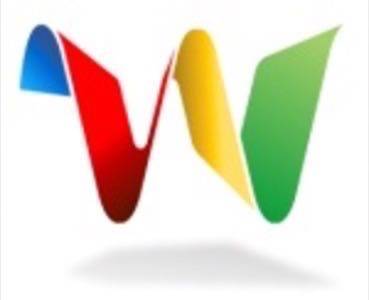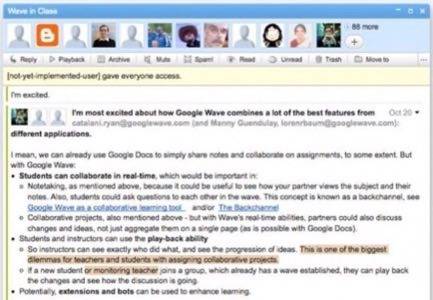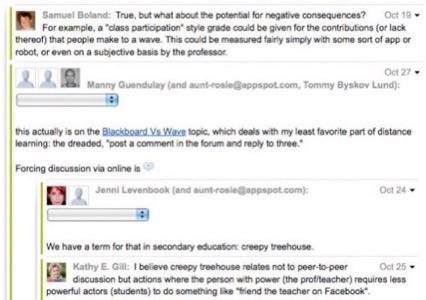Google Wave is a much hyped new Internet-based communications and collaboration platform. It was announced at the end of May, released as a ‘Preview’ product shortly after and 100,000 more invites were made available at the end of September.

Early users reported mixed feelings. But one month after Google Wave was opened to tens of thousands of people, how are people using it now? What use cases are being discovered? Let’s start with the education sector. We’ll explore other use cases in upcoming posts.
What is Google Wave Again?
A quick reminder of what Google Wave is. In a nutshell, Google Wave is a new form of real-time communications. Google describes it as “equal parts conversation and document.” In our first ‘hands-on’ post at the beginning of June, we described it as “real-time email with a big dose of IM built-in” – although we noted that “this only describes a small part of what Wave can do.”
In a recent CNN profile, Wave creators Lars and Jens Rasmussen described it as making email “collaborative and instant.”
Wave in Class
After searching some public ‘waves,’ we came across an educational wave. Entitled ‘Wave in Class,’ this wave was started by Loren Baum (a self-described “collaborative learning enthusiast” and graduate student at Ben Gurion University) and Sam Boland (a Politics student and “Tech Enthusiast” at Occidental College, Los Angeles).
The wave was started to explore concepts like “Collaborative Note Taking”
and “Wave as a Debate Host.” Nearly 100 people are included in the wave, ranging from teachers to PhD students to IT professionals to high school students.

This particular wave was framed at the start as being “a set of collaborative documents, supported by a chat.”
As a note-taking tool, Samuel Boland wrote that “there appears to be a concensus that this [Google Wave] will work as a note-taking tool, the only disagreement is over how to implement it.” Options for note-taking include voluntary extra-curricular groups, rotating in-class groups and small in-class groups.
A few users enthused later in the wave that “Google Wave combines a lot of the best features from different applications” – but with a real-time twist.
It was noted that while Google Docs can be used to share notes and collaborate on assignments, with Google Wave students can collaborate in real-time. This could be important in education for things like notetaking, asking questions (a.k.a. a backchannel) and collaborative projects.
Another feature of Wave that would be useful for education purposes, according to this 100-person wave, is the play-back ability – “so instructors can see exactly who did what, and see the progression of ideas.”
Will Wave Make Students Lazy?
One concern that seemed to pop up several times in the wave was that Google Wave could make it too easy for lazy students to get by. As Justin Neitzey succinctly put it: “I don’t think kids should be allowed piggy back off the work of others.”
This is a similar concern that some in the education system had with Wolfram Alpha, another innovative Web tool that is set to change the way education is delivered.

Manny Guendulay responded that “reading those notes and participating in the collaboration of those notes hold totally different of levels of thinking.” He argued that “the person simply reading the notes (passively learning) has no chance to perform at the same level as someone who helped collaborate (active learning) on those notes, or even watched and read along while they were being created.”
In other words, engaging with Google Wave – and the Web in general in fact – will lead to smarter, better performing students. That sounds reasonable to us, but time will tell for both Google Wave and Wolfram Alpha on that score.
Conclusion
Overall, it is clear that Google Wave has potential to be very useful in the education system, particularly as a real-time collaborative note-taking tool. Three students experimented with just that in a lecture; the resulting notes were said to be “more complete” than if Wave hadn’t been used.
If you’re interested in exploring other education waves, check these out:
- Higher Ed Directory (meta)
- Software Roles in Education – a structured, goal driven exploration
- Wave for Notes – about note taking
- Student-side Class Management: a Wave template










